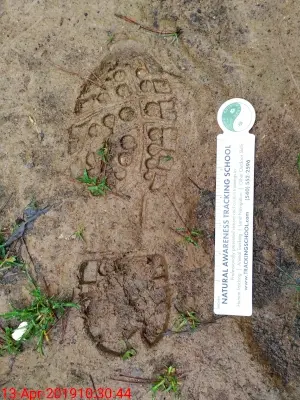 I attended the Virginia SAR Conference in Appomatox, Virginia this year and had a blast!
The primary reason I attended the conference was to attend the Lost Person Behavior class, taught by Bob Koester himself, along with the companion Train the Trainer class, which allows me to teach the class to interested people.
Of course there were lots of other classes offered at the conference that I had a hard time picking and choosing from.
Tracking won the day and I have now been exposed to some of the most interesting manual search procedures I’ve ever seen.
I attended the Virginia SAR Conference in Appomatox, Virginia this year and had a blast!
The primary reason I attended the conference was to attend the Lost Person Behavior class, taught by Bob Koester himself, along with the companion Train the Trainer class, which allows me to teach the class to interested people.
Of course there were lots of other classes offered at the conference that I had a hard time picking and choosing from.
Tracking won the day and I have now been exposed to some of the most interesting manual search procedures I’ve ever seen.
Lost Person Behavior
Lost Person Behavior is a class that basically teaches you how to use the Lost Person Behavior data that is published in the book and app. This data, collected from thousands of searches from around the world, provides statistical data about where missing subjects are found compared to where they whet lost, and separates missing subjects into categories that differentiate characteristics regarding their wandering.
This class is offered sporadically so when I had the opportunity to take the class from its creator I jumped at the chance. I also took the opportunity to take the train-the-trainer class so I could later teach this class to others.
The class is a data-geek’s dream! Bob will offer formulas and statistics when asked and explains the data well. There are lots of map exercises which lead to an immersive experience that will lend the student to being better prepared for actual searches.
Introduction to Tracking
Before the conference, the closest I had been to the subject of tracking was that of a TV show. I know what tracking is: the determination of whether or not someone or something has been in a particular location and, if they have been, in what direction they went. Beyond that, I knew nothing.
After the Introduction to Tracking class, taught by Rob Speiden, I can say I know just a little bit more. We examined shoe prints in easily impressionable sand. We measured and diagrammed the prints, measured stride, and learned how to properly document a track. All-in-all, it was a great class.
Tracking Evaluations
While at the conference I had the opportunity to take two tracking evaluations: sign interpretations and sign squares. These evaluations, along with several others, are required for becoming a certified tracker. To say I did well would be an overstatement. I knew some of the sign interpretation questions but had never been exposed to any of the sign squares which requires the student to determine whether there are zero, one, or two tracks in each square, where the track starts and ends, and in what direction the track goes.
I did better than I expected, having never been exposed to the problem, and found myself learning more about what to look for when looking for tracks. The scores I received were a 3.27 on the Sign Interpretation, and a 2.22 on Detection and a 3.75 in the Interpretation on the Sign Squares test.
Needless to say, I’m not a tracker… yet.
Overall, I found the conference to be a great way to learn new skills and to meet new people. I’ve even been invited to attend the NPS SAREX in a couple of weeks so we’ll have to see how that goes.